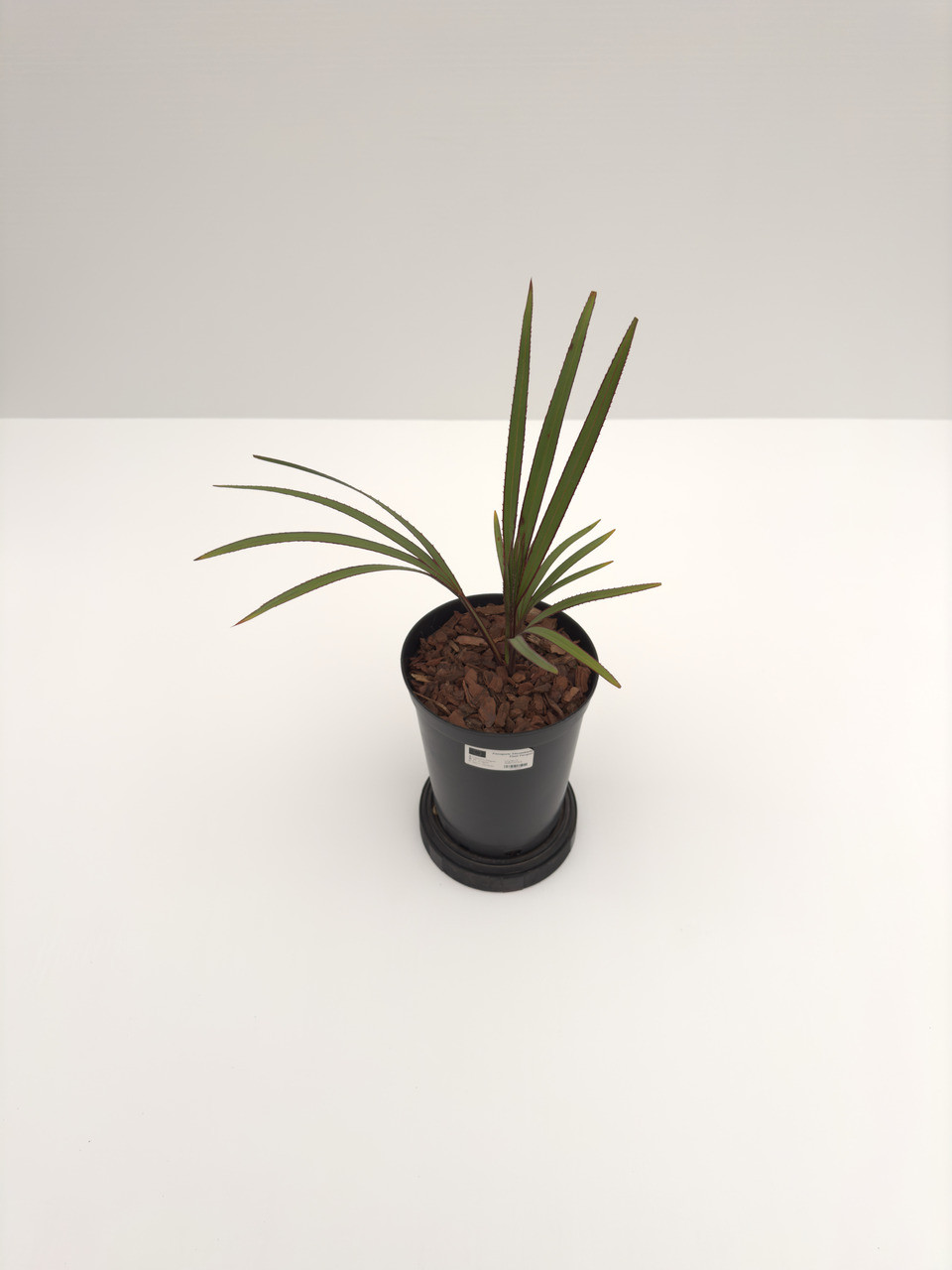Product Description
Habitat and Distribution
Open forest on the Mascarene Island of Mauritius, and Round Island.
Description
A single-trunked palm, eventually 20 to 35 feet tall with a 15-foot spread, Latan Palms are noted for their distinctive, coarse-textured costapalmate leaves. The large, very thick and stiff leaves, up to eight feet in diameter, are held aloft on five-foot-long petioles. The surface of each leaf is covered with a whitish, waxy or wooly down, providing a silvery appearance to the palm. The three to six-foot-long flower stalks are present among the leaves in spring and some of the glossy brown, two-inch-wide fruits are always ripening. The 10-inch-wide trunks have thick, swollen bases. Latan Palm makes a striking specimen planting and is well-suited to seaside locations due to its moderate salt-tolerance. Plant it in an area where you would like to attract attention. People's eyes will always be drawn to this plant, no matter where it is planted.
Stem: Solitary, upright stems to 10 m tall and up to 25 cm in diameter, bulging at the base of the stem, with irregular, slightly raised leaf scar rings on a dark grayish background. Leaves: Costapalmate, induplicate, up to 3 m wide, divided into stiff, single-fold segments about 1/3 to 1/2 the length of the leaf blade, with undivided leaf segment tips. The leaf color is a pale waxy blue to blue-green with dense, pale, wooly (floccose) tomentum on the underside. The leaf sheath splits to form a V-shape below the petiole, the petiole is smooth and sharp-edged or armed with minute teeth along the margin near its base, and the hastula is flat and somewhat arrow-shaped. Flowers and fruit: Yellowish staminate and pistillate flowers grow on separate palms. Inflorescences with male flowers shorter (to 1 m long) and have more branches than those with female flowers (to 2 m long). Fruits are oblong (up to 2.5 cm wide and 7.5 cm long) and greenish-brown in color. The fruits are similar to those of a peach or apricot in that a woody "pit" with a textured surface encloses a smooth, almond-shaped seed. (idtools.org) Editing by edric.
Culture
Sunny, moist, but well drained position. Tolerates full sun from a very young age. A very tough and adaptable plant. The easiest to grow of the Latanias. USDA hardiness zones: 10B through 11
Comments and Curiosities
The Blue Latan Palm is one of the best ornamental fan palms. While young plants have beautiful red petioles and leaf margins, mature plants produce a compact crown of very leathery, stiff, blue fan leaves with leafstalks covered in thick, white wool. They grow a slender trunk over the years. It is the most vigorous and robust of the three species in the genus and will thrive in a position in full sun in most tropical and frost-free subtropical areas. Seeds need up to several months to sprout. Clean seeds, carefully scratch hard layer with a knife or similar and pre-soak in warm water for 1-3 days. Put each seed in a mid-sized to large pot (6" minimum). Latania likes deep soil. When they germinate, they create a thick sinker, that often appears on the soil surface first. After a few days the sinker turns into the soil again and checks the soil. If it is too narrow, germination stops. 1-2 weeks after the sinker the seedlings appears (usually close to the sinker) on the surface. sinker appears usually after 1-3 weeks, seedling after 2-5 weeks. Plants creates very thick roots that grow fast deep into the soil. (toptropicals.com)
The Blue Latan Palm is one of the best ornamental fan palms. While young plants have beautiful red petioles and leaf margins, mature plants produce a compact crown of very leathery, stiff, blue fan leaves with leafstalks covered in thick, white wool. They grow a slender trunk over the years. It is the most vigorous and robust of the three species in the genus and will thrive in a position in full sun in most tropical and frost-free subtropical areas. (RPS.com)









